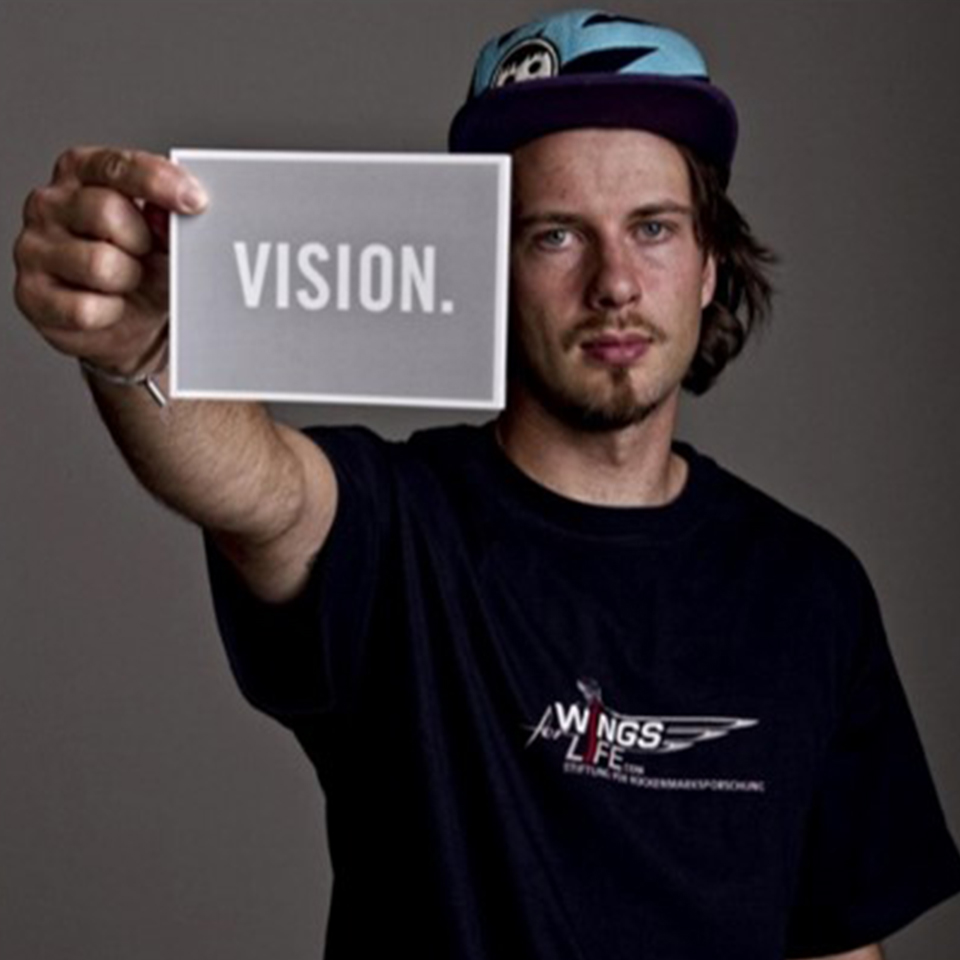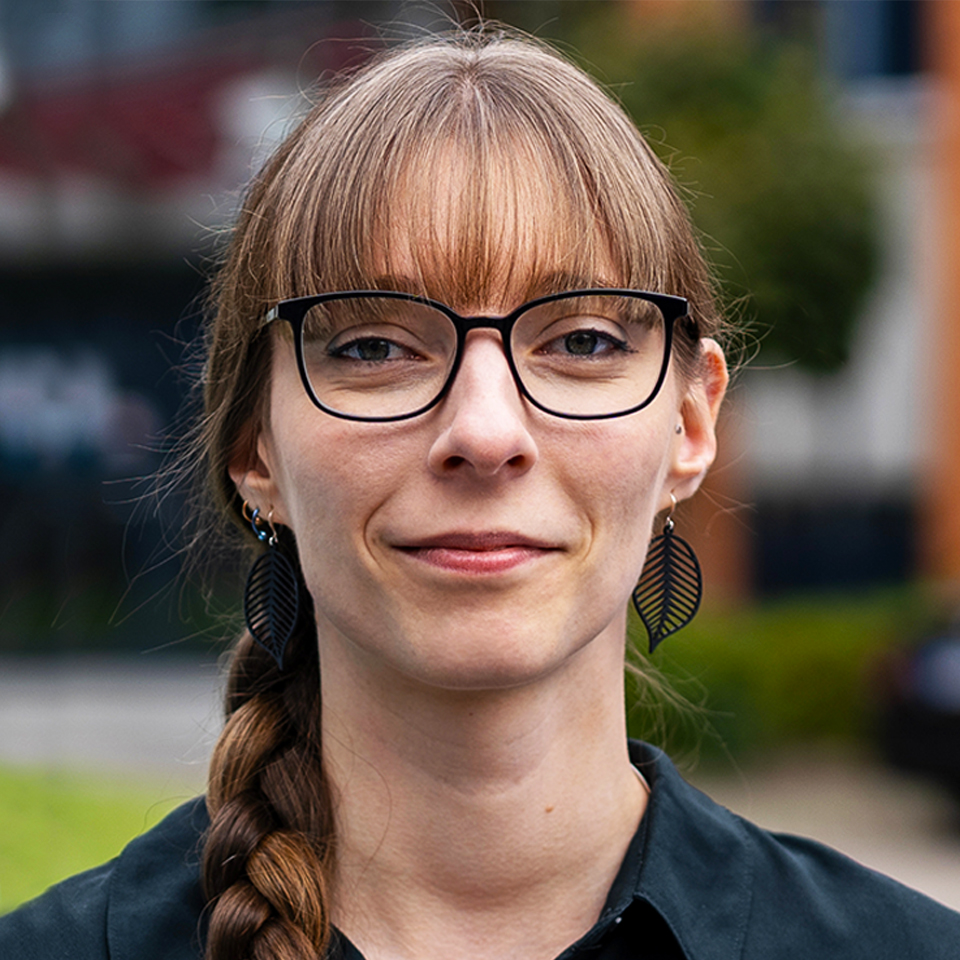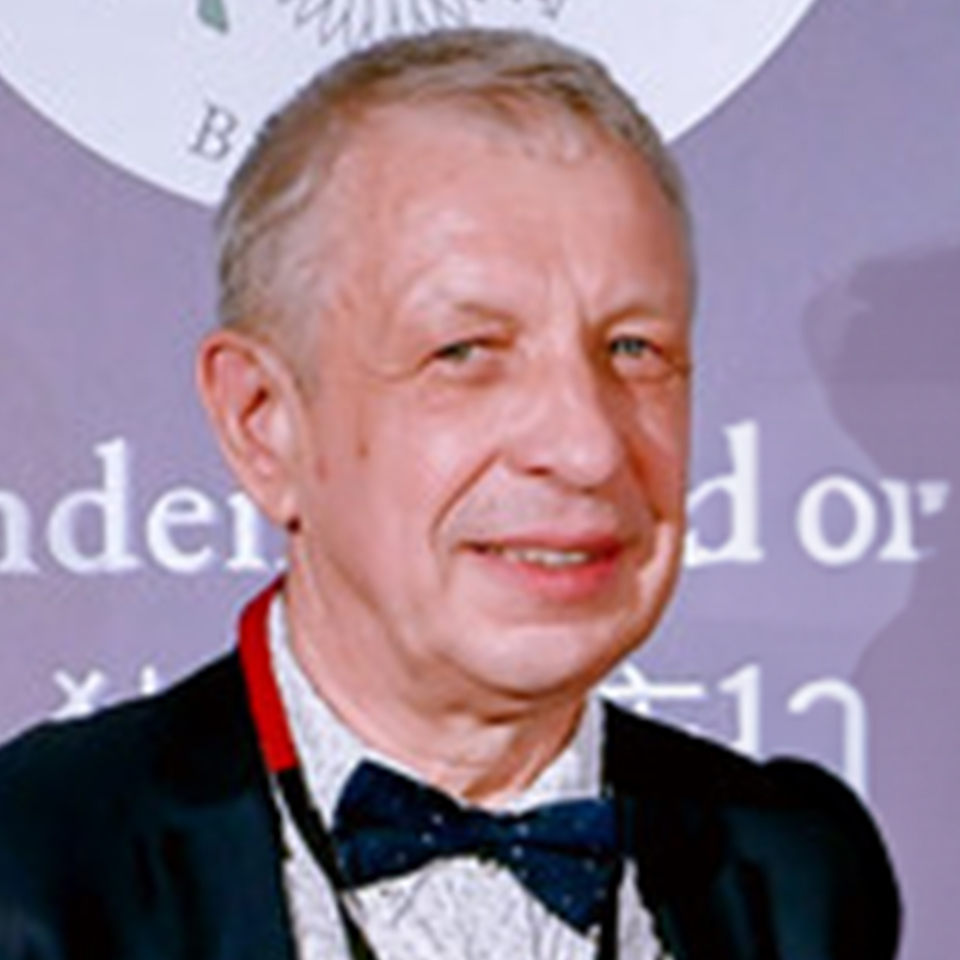BECOME A SPEAKER
Here you can find the speakers of #iAHC2024. These are constantly updated, so stay up to date.
Are you also interested in giving a presentation at the interACTIVE HAPTICS Conference? Then apply here by clicking on the button. We will then get in touch with you.
SPEAKER
-
 Daniel Shor Innovobot Lans / Haptic Industry ForumDaniel Shor
Daniel Shor Innovobot Lans / Haptic Industry ForumDaniel ShorDaniel "Dan" Shor is a Berlin-based designer, researcher, and mechanical engineer exploring the link between emotionality and touch experiences. As Research Director, Europe at Innovobot, he blends human contact and experiential context to build the future of haptic technology, focusing on developing devices that stimulate human connection and behaviors through vibrotactile feedback. At Innovobot, Dan Shor collaborates with companies from startups to large enterprise, as well as designers, artists, and creatives to create novel tactile experiences. He is responsible for developing relationships with academic institutions active in the areas of human-machine interface and haptics. He holds a MSc from Delft University of Technology (NL) in Product Design Engineering (2018), and a BSc in Mechanical Engineering from Rensselaer Polytechnic Institute (USA) (2013). He lectures at TU Delft in the Faculty of Industrial Design and the HCI department at FH Salzburg.
THE NEED FOR UNIVERSAL DESIGN LANGUAGE IN HAPTIC SEATING
Integrating haptic seating in cars can significantly enhance safety, comfort, and user experience by using tactile feedback to alert drivers to critical situations like lane departures and obstacles. However, the rapid development of this technology necessitates standardization to prevent user confusion and ensure effectiveness. Drawing parallels to the evolution of radio interfaces and infotainment systems, the lack of standardization in haptic feedback could lead to user overwhelm and distraction, hindering adoption. Historical lessons from consumer electronics show that unclear haptic applications are often seen as gimmicks. To avoid this, automotive manufacturers must develop intuitive, safety-enhancing signals through rigorous testing and user feedback. Successful adoption of haptic seating relies on industry-wide standards, preventing confusion and fostering trust. At the Interactive Haptics Conference in Hamburg, best practices and cross-industry collaboration for standardization will be discussed, emphasizing the need for clear guidelines to make haptic seating a key feature in future automotive design.
-
 Thomas Müller Hapticlabs GmbHThomas Müller
Thomas Müller Hapticlabs GmbHThomas MüllerThomas Müller is co-founder of HapticLabs, where he leads the haptic strategy and integration process. HapticLabs provides user-friendly tools for designing and developing tactile experiences, working closely with developers, designers, and researchers across verticals. With a background in user experience design, he is dedicated to democratising haptics and bring intuitive and accessible human-machine interactions to the market
HAPTIC DESIGN GUIDELINES & ECOSYSTEM - AN INTRODUCTION TO THE WORKSHOP
Haptic technology has advanced significantly in recent years. However, haptic effects and patterns often fall behind due to the complex design process and lack of guidelines. Let's take a closer look at the advantages of active haptics, including the capability for dynamic feedback that adapts to the context and content of the interaction. We will cover the design process of tactile experiences, walk through various use cases that leverage active haptics, and explore approaches to achieve intuitive experiences.
-
 Morten Rothmann Hamsø EngineeringMorten Rothmann
Morten Rothmann Hamsø EngineeringMorten RothmannMorten has a M.Sc. in Business Engineering and a background in disruptive innovations. He is the managing director of Hamsø Engineering that specializes in haptics for HMI-solutions. Together with his team, he focuses on the full application and how to make the design process faster, cheaper, and easier to allow for unique and highly intuitive solutions and satisfactory user experiences. Morten has a broad network within Danish universities and has a technical interest in how things work and come together. He always has the goal in mind and fights to achieve the best solution for the task at hand.
HAPTIC DESIGN GUIDELINES & ECOSYSTEM - AN INTRODUCTION TO THE WORKSHOP
-
 Frauke Junghans FILK Freiberg Institute gGmbHFrauke Junghans
Frauke Junghans FILK Freiberg Institute gGmbHFrauke JunghansDr. Frauke Junghans studied and completed her doctorate in the field of biomedical materials in the engineering sciences at Martin Luther University Halle-Wittenberg. She has been working at the FILK Freiberg Institute gGmbH since 2011, focusing her research on the targeted modification of material surfaces using various plasma techniques. She has been the head of the Surfaces department at the FILK Freiberg Institute gGmbH since 2020. In addition to the modification of surfaces, the investigation of friction and wear processes, data analysis and simulation, her department also focuses on research into the comfort properties and perception of flexible materials.
HAPTIC STUDIES ON FLEXIBLE INTERIOR MATERIALS
The subjective perceived quality of a product by the customer is becoming increasingly important and contributes significantly to the purchase decision. Objectifying human perception (converting it into scalable variables) is one of the tasks of the research. Subjective human perceptions from test subject studies conducted at the institute are simulated using objective measurement and evaluation tools. Here, important parameters are friction properties, surface structures, their deformability and haptically relevant parameters of thermal behavior and moisture management. The department has a unique portfolio of diverse measurement methods for this purpose. For example, materials can be characterized in a component-like, tensioned state. A special haptic standard leather simulates the human friction and deformation properties as a friction partner.
-
 Dr. René Wegner Headis GmbHDr. René Wegner
Dr. René Wegner Headis GmbHDr. René WegnerDr. René Wegner is the CEO & owner of the Headis GmbH. Headis, the trendsport he invented, is only one successful development and is played worldwide.
The focus of the company is similar to the topic of his dissertation: Creating & inventing IP's in the sports segment to achieve a unique customer benefit, all based on a mix of the scientific background and the experience in the sports industry. He drives the progress from the idea to science-based innovations and products. Based on this, the "Active Seat Project" was started.ACTIVE SEAT - A GAMIFIED IN-SEAT ACTIVATION VIA PATENTED SENSOR SYSTEM
The health problems and discomfort associated with sitting are well known. To address these issues, there is a large body of exercise science research to stimulate physical activity to promote health and well-being. Therefore, our goal is to activate sedentary people and we conducted a two-year EU-funded R&D project to develop a prototype. The resulting and patented sensor system can be integrated into many different types of seats.
The Active Seat use case provides health-promoting exercises and guidance like a personal coach. Performance is measured and the results are visualized in a gamified web application. Haptic, auditory or visual feedback is used to convey the information to the user.
This allows the exercise program to be performed simultaneously with other tasks requiring attention, while the vibrotactile feedback provides guidance through specially placed actuators. Another application is the screen-based fitness game, which can be controlled by the user's physical activity. In addition to the strength exercises, there is a live detection of the sensor data used for the fitness game and the integration of a back exercise, that can be detected by the system.
A new EU-funded project with industrial partners has been launched to bring the prototype closer to mass production. Development topics include AI implementation, sensor optimization (smart surfaces), testing in commercial vehicles and research into relaxation exercises. -
 Jean-François Ménard D-BoxJean-François Ménard
Jean-François Ménard D-BoxJean-François MénardJean-François Ménard, Eng., serves as the Principal Strategist, Innovation at D-BOX, specializing in the field of haptics for entertainment. He graduated from the University of Sherbrooke with a degree in electrical and computer engineering. Jean-François has contributed to the field with 8 scientific publications and over 20 granted patents. He has spent the last 17 years enhancing whole body haptic systems at D-BOX, driving technological advancements and superior user experiences in movies and gaming through innovative haptic solutions.
THE ART & SCIENCE BEHIND CREATING IMMERSIVE WHOLE BODY EXPERIENCE
This presentation delves into the intricate balance between art and science required to develop immersive whole body haptic experiences. Starting with the evolution of haptic technology at D-BOX, the presentation will highlight the hard work required to satisfy customers with high expectations, navigate through the scientific research that supports the technology, and the artistic processes involved in haptic content creation. An honest examination of both the successes and challenges faced will provide insights into how D-BOX is enhancing experiences in movies and gaming, along with future opportunities to scale haptic content creation.
-
 Anouschka Esselun GREWUS GmbHAnouschka Esselun
Anouschka Esselun GREWUS GmbHAnouschka EsselunAnouschka Esselun has been a project manager at https://www.grewus.de/GREWUS GmbH since 2018. She holds a Master of Science from Technical University Braunschweig and has a background in acoustics and digital signal processing. As an engineer for acoustics and haptics, Anouschka supports customers in integrating active haptic feedback, especially in the field of electronic driving, measurements of actuators, and entire applications. Also, she develops individual haptic patterns depending on the specification, actuator, and use case.
OPTIMIZED ELECTRONIC DRIVING OF ACTUATORS: ACTIVE BRAKING AND OVERDRIVE
The optimal electronic driving of haptic actuators is essential to integrating haptics into an application, whether for tactile feedback on smart surfaces, touchscreens, or even seats.
A wide range of haptic experiences can often be achieved in the first step with simple electronic driving signals. However, for the best result, the signal can be further tuned in regards of the actuator and the application. Because in practice, actuators not only have a specific frequency response but also their own response time and decay behavior.
Therefore, targeted electronic driving opens possibilities for compensating the actuator's and application's mechanical effects. The haptic signal can be adjusted in such a way that rise and stop times are significantly shortened, the frequency response is optimized, and, ultimately, a stronger and more precise haptic can be achieved.
In the presentation, the two approaches "Overdrive" and "Active Braking" will be introduced, in which cases they should be used, and how they can be implemented. The effects on haptic feedback will be demonstrated using exemplary measurements. -
 Dr. Iyad Nasrallah TouchNetixDr. Iyad Nasrallah
Dr. Iyad Nasrallah TouchNetixDr. Iyad NasrallahDr. Iyad Nasrallah is Product Line Manager of TouchNetix’s force sensing technology, and oversees TouchNetix’s strategic haptic collaborations. He holds a PhD in Physics in Organic Semiconductor/Flexible Electronics from the University of Cambridge, and was previously a Research Fellow at Wolfson College, University of Cambridge, researching mechanically-flexible smart sensor technologies for the Internet of Things.
AXIOM, INNOVATIVE HMI SOLUTIONS
One of aXiom’s latest system level innovations is PilotID. This feature uses the touchscreen itself to identify the user with no extra sensing. This has countless advantages to multi-player gaming applications, as well as functional safety implementations in automotive smart surfaces. This presentation will also highlight a new bespoke firmware enabling force button applications. All TouchNetix solutions can be coupled with the in-built aXiom haptic triggering functionality bringing massive benefits to signal latency, and offering the best haptic experience to users.
-
 Prof. Dr.-Ing. Thorsten A. Kern TUHHProf. Dr.-Ing. Thorsten A. Kern
Prof. Dr.-Ing. Thorsten A. Kern TUHHProf. Dr.-Ing. Thorsten A. KernThorsten A. Kern received his Dipl.-Ing. (2002) and Dr.-Ing. (2006) degrees from Darmstadt University of Technology (TUDA), Germany, in the fields of actuator and sensor development for medical human-machine interfaces (HMIs) in applications like minimally invasive surgery and catheterizations. He is currently the director at Hamburg University of Technology (TUHH), Germany, of the Institute for Mechatronics in Mechanics. He previously worked in Automotive Industry at Continental as an R&D manager for interior components, leading a team of 300 engineers worldwide. He joined Continental in 2008 covering various functions with increasing range of responsibility in actuator development, motor devel- opment and active haptic device development before shifting toward R&D management and product manage- ment on Head-Up Displays. Between 2006 and 2008, he was working in parallel in a startup focusing on medical interventions and was the main editor of the first edition of “Engineering Haptic Devices”. He joined Hamburg University in January 2019. His interests are specifically focused on all types of electromagnetic sensors and actuators and their system integration toward larger motor- or sensor-systems in high-dynamic applications. Since 2022 he is vice-president of the EuroHaptics Society and currently holds the position of the dean of the mechanical engineering at TUHH.
THE POWER OF VIBROTACTILE ACTUATORS - A DESIGN METHODOLOGY AND CONCEPT FOR ACTIVE TACTILE INTERFACE DESIGN
Designing applications with vibrotactile actuators such as touchscreens, trackpads, public interfaces or just simple household switches pose a challenge to any mechatronic or mechanical engineer. Especially wit the target for a reproducible and defined haptic signature and feedback. Due to the dynamics of any application and system the engineer either have the choice of designing a large number of samples and test it in combination with different actuators until it suits the needs, or the design flexibility is getting very limited by picking some combination and then making the best out of it by tuning mechanics or signals. This even gets worse if your company policy or your customer requires an tactile signature reaching across product families and product generations. In this talk we will show a systematic and methodological approach for vibrotactile haptic system design mainly based on LRAs and ERMs, and demonstrate its feasibility on some basic test systems from the math to the practical verification. We will highlight some of the pitfalls and suggest solutions on how to overcome those by using LTI models in combination with FEM. Furthermore we will discuss some recent findings we had when comparing signal generation methods for performance analysis on linear resonant actuators. We are going to present a toolbox and invite you to walk with us along the path of considering vibrotactile actuators not as acceleration or force source, but as a source of dynamic mechanical power generation in a system with passive mechanical impedances.
-
 Dr. Wolfgang Clemens PolyICDr. Wolfgang Clemens
Dr. Wolfgang Clemens PolyICDr. Wolfgang ClemensDr. Wolfgang Clemens is Director of Product Management & Business Development and Member of the Management Board of PolyIC. In line with this, he is responsible for Marketing and Sales of PolyIC products with focus on touch sensor applications in HMI systems in automotive, home appliances and consumer markets.
Dr. Wolfgang Clemens studied physics at the University of Cologne, where he specialized in solid state physics. After finishing his studies, he earned his doctorate at the research center in Juelich researching in thin magnetic films. After earning his doctorate, Dr. Clemens worked with Siemens Corporate Technology as leading project manager. He was in charge of the development and application of magnetic sensors. Subsequently, he became project leader for the development of integrated polymer circuits (IPC). Therewith, he is cofounder of PolyIC, starting in November 2003 as joint venture between Siemens and Leonhard KURZ Stiftung & Co. KG (since 2010 PolyIC is a 100% KURZ company).SMART INTERACTIVE HMI SURFACES WITH HAPTIC FEEDBACK IN AUTOMOTIVE APPLICATIONS
HMI Applications with capacitive touch input in Automotive Interior are becoming more and more standard. Often, haptic feedback is missing due to cost reasons. But in use cases, where a safe function and detection of false use are needed, as well as for touch switches where one does not directly see the buttons, force measurement and haptic feedback is crytical. Here, passive mechanic feedback and active haptic feedback with actuators are used, depending on the customer. We present examples of real solutions in automotive HMI Applications. In addition we present new solution for active haptic feedback in innovative protoypes. One Example is a crystal steering wheel with glass crystals as touch buttons on a transparent conductive PCB based on our touch PolyTC metal mesh sensor technology. In this demonstrator, an active haptic feedback with a Grewus actuator is implemented, which brings the device “to live”. We also present other solutions to show the combinations of capacitive touch function with haptic feedback.
-
 Prof. Dr. Wolfgang Weinhold President at ISPA - Institute of Surface & Product Analysis Würzburg (Germany)Prof. Dr. Wolfgang Weinhold
Prof. Dr. Wolfgang Weinhold President at ISPA - Institute of Surface & Product Analysis Würzburg (Germany)Prof. Dr. Wolfgang WeinholdProf. Dr. Wolfgang Weinhold embarked on a distinguished journey in aerodynamics, excelling in academia and industry. After starting at Giessen University of Applied Sciences, he pursued Masters degrees at the University of Florida and Duke University, culminating in a Ph.D. from TU Bergakademie Freiberg. With teaching experience across Germany, the U.S., and China, he showcased leadership as President of a pioneering company in Biotribology, Tribology, and Haptics. As CEO of Innowep GmbH, his innovations in testing equipment support global brands in Research & Development and Quality Control. For over 30 years, Prof. Dr. Weinhold has been a pioneer in Quality, Durability, and Haptics, with a focus on material and surface interactions, particularly those related to human touch.
HAPTIC STUDY ON SURFACES: HUMAN SENSE AND PRECISION MEASUREMENTS
Haptics delves into the scientific exploration of touch and its profound impact on our perception of materials and products. Our focus is on understanding how tactile cues—such as texture and temperature—affect our assessment of objects. We explore key topics including the brain's role in tactile perception, the distinction between natural and synthetic materials, and designing materials for specific haptic properties. Using both subjective panel tests and objective measurements, we aim to comprehensively grasp haptic feedback. Case studies, like comparing sports car and luxury sedan interiors, illustrate how haptic research informs product development and user satisfaction. We also examine how tactile quality influences usability and functionality. This segment of the course enables us to dissect touch's role in design and human-material interaction, merging material science, psychology, and engineering to unravel the complexities of haptics.
-
 Elisa Santella GREWUS GmbHElisa Santella
Elisa Santella GREWUS GmbHElisa SantellaElisa Santella (GREWUS GmbH founding member) is Managing Director and responsible for Haptic Key Accounts. GREWUS develops and produces innovative acoustic components and haptic actuators. Together with her team, Elisa supports customers in integrating active haptics. She has been working in the international automotive industry for over 20 years. Furthermore, she is Automotive Working Group chair and Board Member for the Haptics Industry Forum, one of the founding members of the Haptics Alliance, and host & founder of the interACTIVE HAPTICS conference.
SEAT HAPTICS - AS PART OF THE MULTI-MODAL HMI
Seat haptics offers several advantages as part of a multi-modal Human-Machine Interface (HMI). Firstly, they provide a tactile feedback mechanism that enhances the user experience by engaging multiple senses. Additionally, seat haptics can be used to communicate important alerts or warnings, such as in the case of driver assistance systems, where a gentle vibration can alert the driver without causing distraction. Overall, seat haptics contribute to a more immersive and intuitive interaction between humans and machines, making the overall experience safer and more enjoyable.
